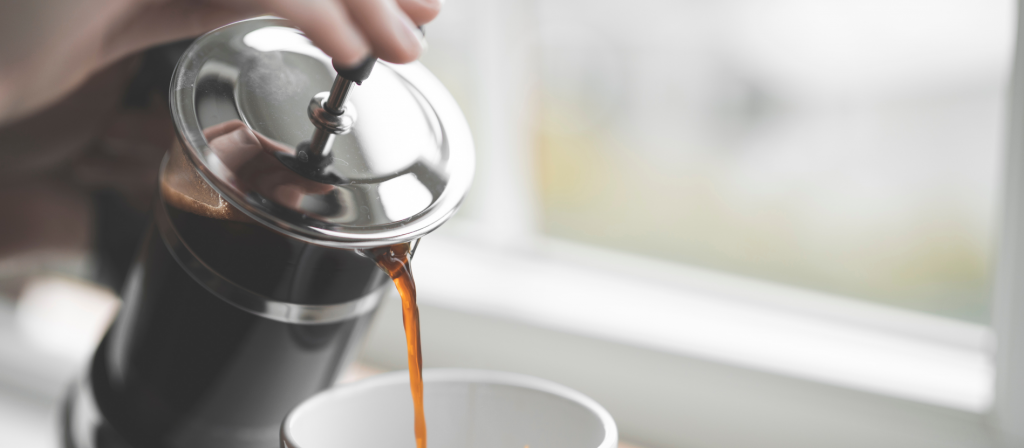
A question often asked is How to make a french press coffee the right way? There’s always room for betterment if you know it.
The difference between good and great french press coffee lies in 3-4 things; we’ll learn this as we move through this article.
Grinding at the correct size, brew ratio, and water temperature makes an additional difference. Also, we’ll look at what the expert says.
So, let’s start by knowing how much coffee and water.
French Press Coffee to Water Ratio
Like every coffee brewing, French press brewing requires water which defines its flavors. But how much?
A 1:15 coffee-to-water ratio is ideal for brewing a french press coffee. However, you are free to change this ratio because not every time, one size fits all.
But keep in mind that going above the recommended ratio, like 1:17, will brew a weaker cup and vice-versa.
Now, you are thinking about how always to match this ratio. The answer is quite simple by measuring it.
See, people generally measure the coffee-to-water ratio in tablespoons or scoops per cup or fl. oz., and I’m not a huge supporter of this. Because for the same tbsp or scoop, a light roast weighs more than a dark roast.
It is always better to use a kitchen weighing scale and measure in grams per liter or milliliters for perfect measurement and consistent brewing of your coffee.
Requirements
- French Press
- Water – Filtered water is recommended.
- Kitchen Weighing Scale
- Coffee Beans
- Coffee Grinder
- Timer – Your phone is sufficient
- Spoon
Preparation
These things should be prepared and decided first before making the french press coffee because it is directly proportional to the taste.
Grinding
Before grinding the beans, we need to know how much coffee to brew. I am brewing for two people, and I have two eight-fluid-ounce cups.
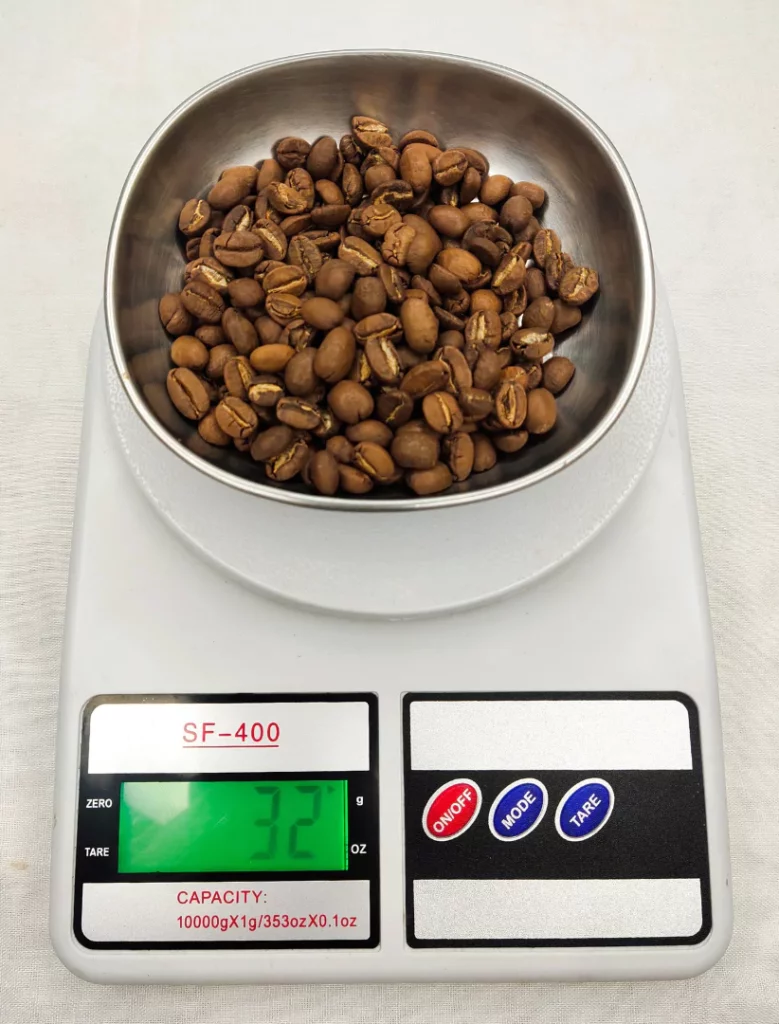
So, 16 fl. Oz. = 473.176 grams, and 473.176/15 = 32 grams of coffee.
If you don’t want to go into the maths, just simply remember 67-70 grams of coffee per liter for a 1:15 ratio.
Measure the coffee beans on a weighing scale depending on how much coffee you want to brew. I weigh 32 grams.
Now, it’s time to grind the beans. I always recommend using a conical burr grinder as it produces consistent grind size, which will extract better flavors.
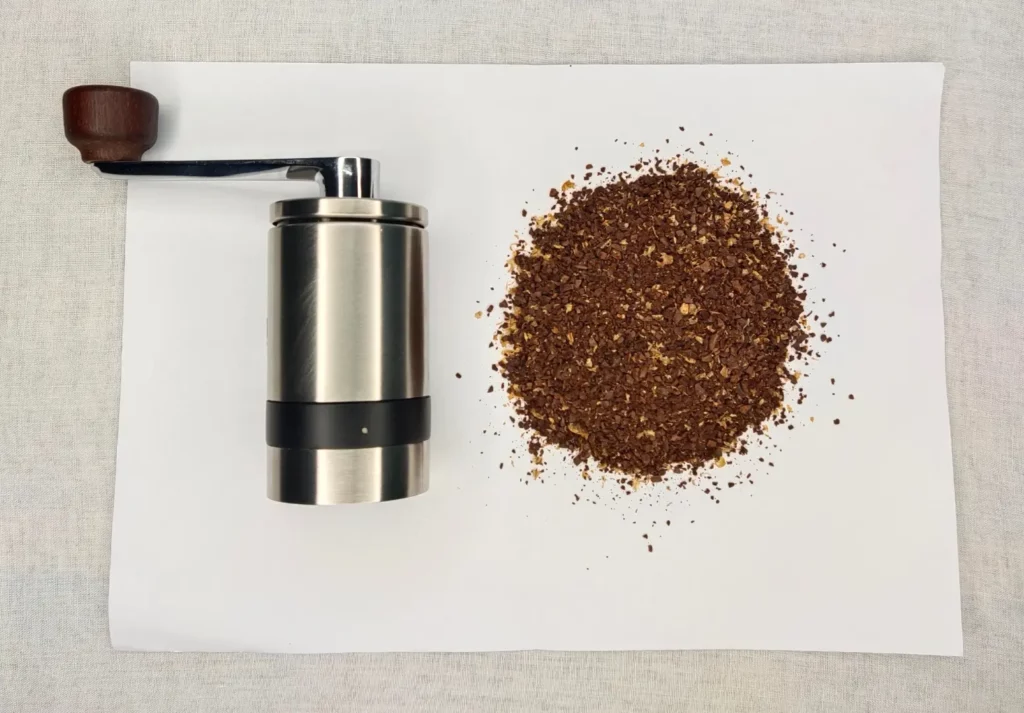
A medium-coarse grind is good for the French press; for example, if you use a manual grinder and suppose it has a total of 11 settings, grinding at 9-10 levels will be fine.
Although, you can play with these settings and find what works best for you.
Water Preparation
We need water at 195-205° Fahrenheit for even and good extraction.
You can use an electric kettle or a pan on the stove to heat your water.
Remember not to boil your water; keep it on a source of heat till it starts to simmer – you can see tiny bubbles coming to the surface.
What if we extract from boiling water? Boiling water cause over-extraction of coffee grounds, creating a less palatable cup and a worse flavor. On the other hand, lukewarm water will soak up the coffee less.
Steps to Brew French Press
Below I’ve written an in-depth step-by-step guide to how to make a french press coffee.
Step 1: Preheat the French Press

Preheating the French press means we are getting closer to the temperature at which we’ll brew our coffee.
It will enhance the flavor of your coffee by managing the temperature during brewing.
To do this, pour hot water into your carafe, close the lid, and press the plunger so that the plate and filter also heat up. Swirl it and let it rest for 30 seconds.
Step 2: Add Coffee

Add measured medium-coarse grind coffee grounds into your carafe and give it a simple shake, so the coffee bed is flattened.
Step 3: Add Water
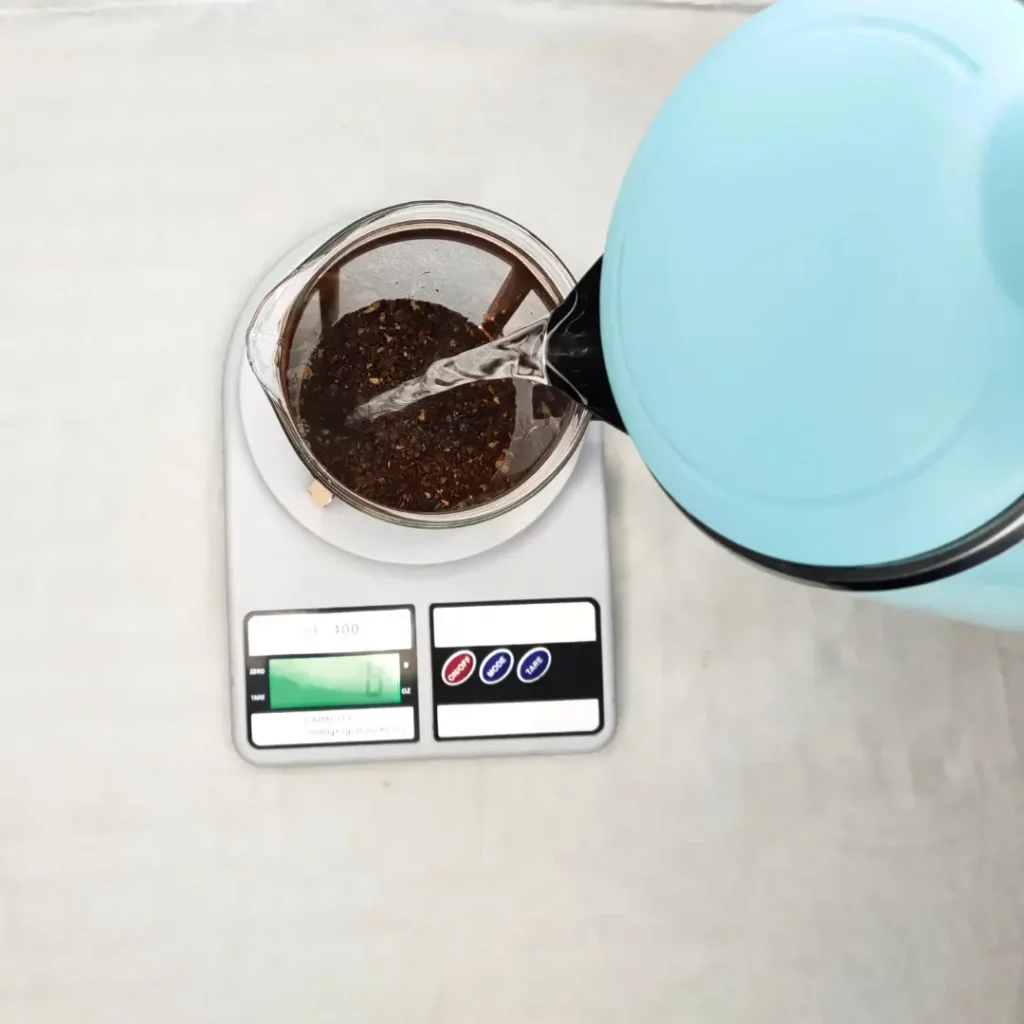
Take a Kitchen weighing scale and put the french press over it. Tare and pour the hot water (195-205°F).
Remember, you don’t have to add all the water right now; just add enough water that is twice the weight of your coffee. For example, I am brewing 32 grams of coffee, so I’ll add 64 grams or ml of water.
Step 4: Bloom
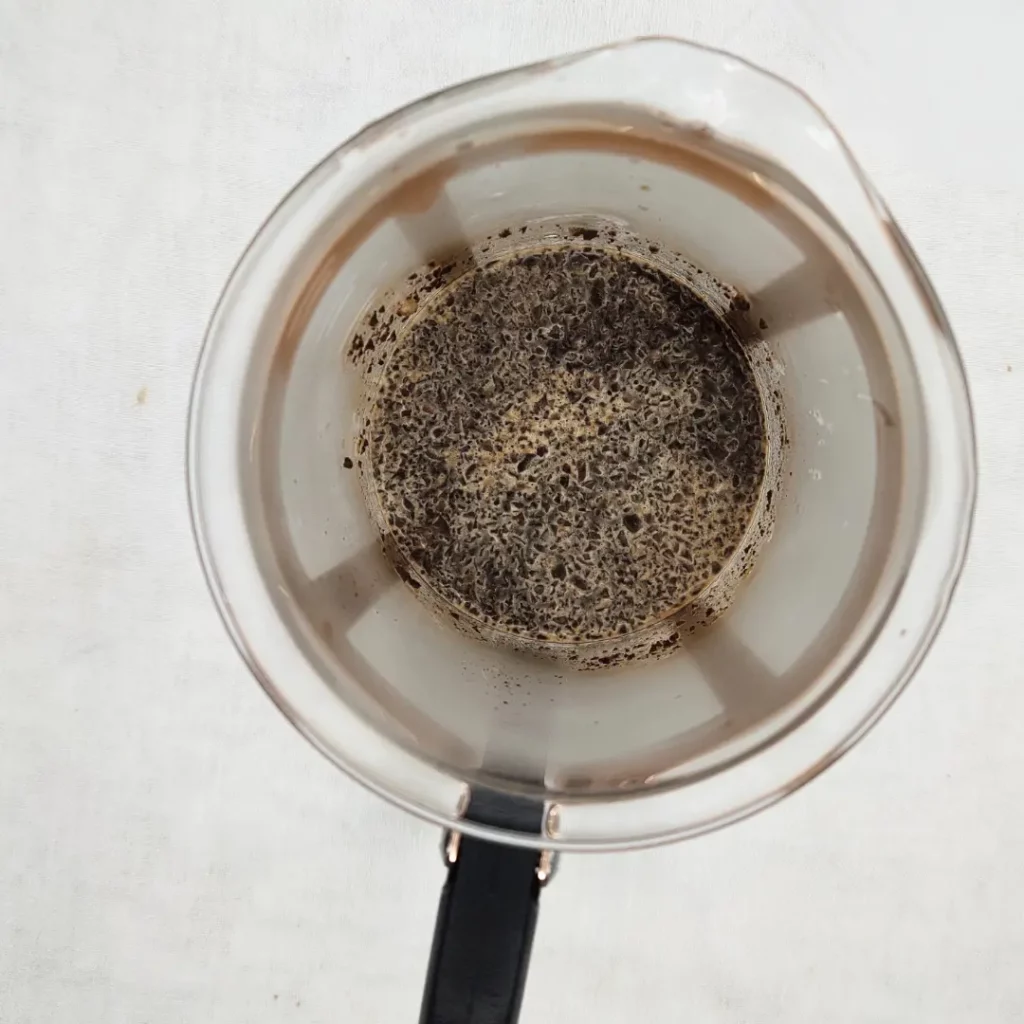
Carbon dioxide is retained in the coffee beans, so when you brew without blooming, it does not let water extract all the flavors.
In very short, coffee blooming is the process of releasing carbon dioxide from the coffee grounds.
You can see this process when you add water, the coffee will puff up, and bubbles come out; this is degassing.

After 30 seconds, take a wooden spoon and give a gentle stir; the purpose of doing this is to mix the coffee grounds that have come to the surface.
Step 5: Add More Water
Then add the remaining water and, at the same time, keep an eye on the weighing scale to match the coffee-to-water ratio.
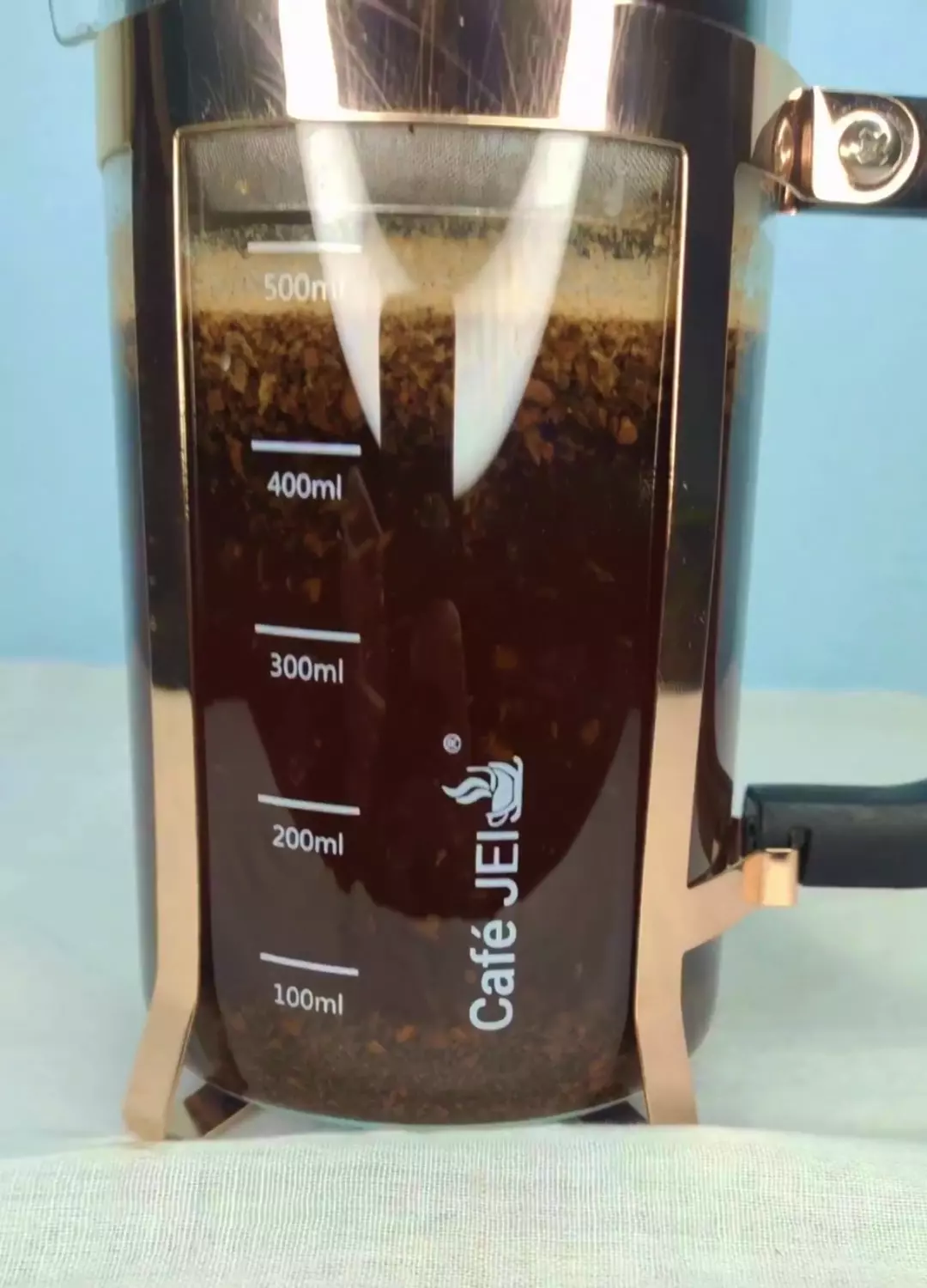
After pouring the water, set the timer to 4 minutes (brewing time), and in the meantime, do whatever you want.
Step 6: Plunge
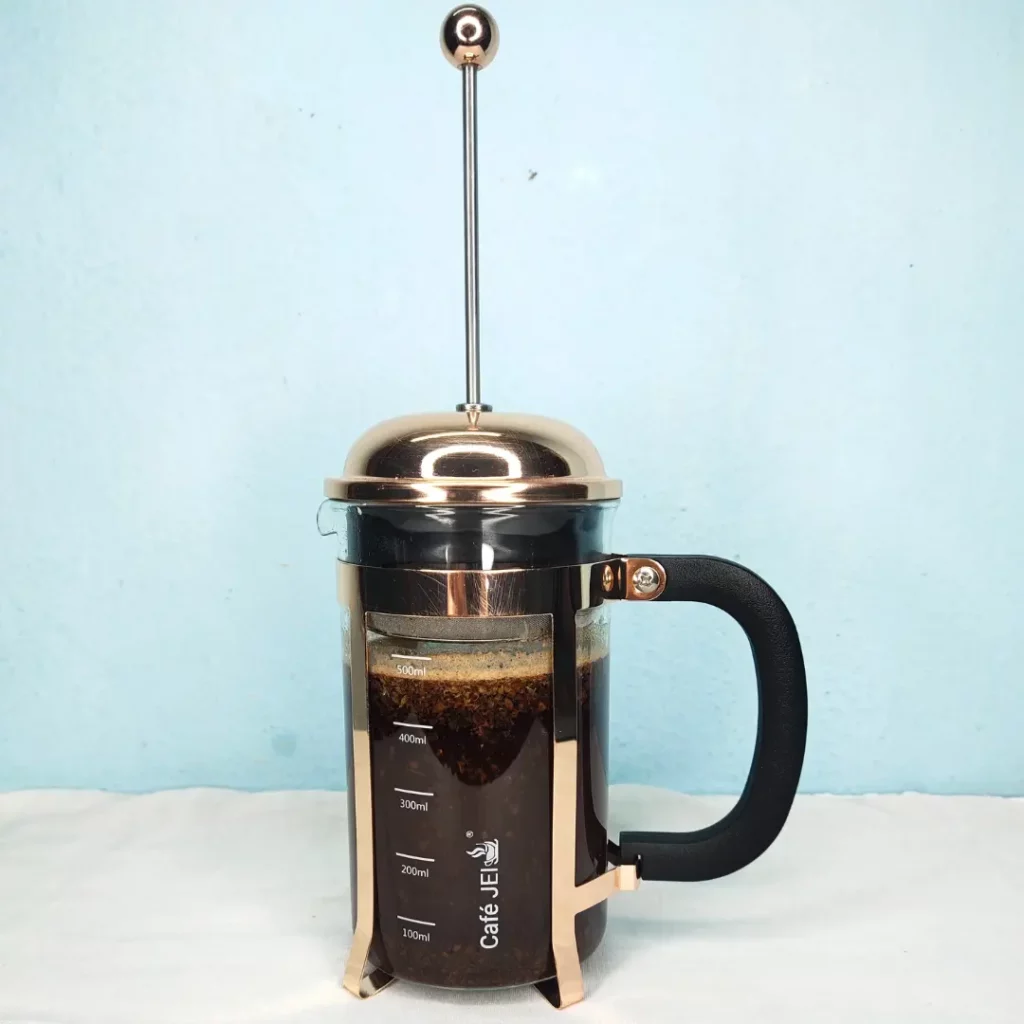
After the coffee has been brewed, close the lid and ensure that the plunger is pulled up.

Now very slowly and calmly press the plunger down to the bottom to filter out the grounds. Pressing it fast is similar to stirring the ground. So, go slow.
If the plunger goes without any resistance, you need to grind it a little fine, and if it’s taking time to plunge, shift a little on the coarser side.
Step 7: Pour and Enjoy!

Pour the coffee slowly into your cup, do not pour it fast, as the quicker you pour, the higher the probability of getting gritty sludge.
Hurray! You made yourself a good cup of a French press. It is totally up to you if you want to add sugar or milk.
What Expert Says
Here I mentioned two french press brewing techniques of the winner of the world barista championship.
Gwilym Davies
Gwilym, World Barista Champion 2009, shares his favorite recipe of the French press.
- Measure coffee beans and grind them in medium settings.
- Put your french press on a weighing scale and add coffee grounds.
- Tare and add water while considering coffee to water ratio.
- Wait for 5 minutes to brew
- You will notice that most of the grounds are settled on the surface and bottom of the carafe. Also, the concentration of water at the surface and bottom is higher than that in the middle. For this, we will stir our brew well.
- Cover the lid and wait for 3 minutes. Meanwhile, the water will extract more flavor, and some of the grounds will settle to the bottom.
- Press the plunger and again wait for 2 minutes. If any remaining particles are left, they will come to the bottom.
- Pour it into your cup and wait for another minute. Enjoy!
This method takes longer than usual time to brew, but all this is to minimize the sludge.
James Hoffmann
James, World Barista Champion 2007, shows us how to brew a delicious cup of the French press. This method is widely used and brewed by individuals and content creators, and they find it helpful.
For brewing, follow our steps to brew french press till step 5 and skip the blooming part; just directly add all the water.
After 4 minutes, take a spoon and stir it. Some of the grounds will sink, and those who are still at the surface, for this, take two spoons and remove them from the carafe; if foam comes too, then it is ok.
After 4 minutes, stir it with a spoon. Some of the ground will sink, and the floating particles which are left on top, take two spoons and take them out from the carafe; it is ok if foam comes.
Then wait for another 5 minutes; all the remaining bits will submerge and settle down to the bottom.
Press the plunger, but this time just until it sinks to the surface – this will act as a filter. Slowly pour into your cup and Enjoy!
Tips for Perfection
The sole purpose of these tips is to brew a better and more flavorful French press coffee
- Always use freshly roasted beans, and prefer grinding them before brewing. It will taste much better than the pre-ground one.
- Brewed with soft and clean water extract better flavors than hard and tap water.
- Right after brewing, try to take all the coffee out of the carafe to another pot. Staying it in too long causes over-extraction and taste bitter.
- For consistent brewing, always measure the amount of water and coffee.
What to do next?
Before brewing, always make sure you are within your caffeine limits. Check out our guide on How much caffeine in a cup of coffee?
